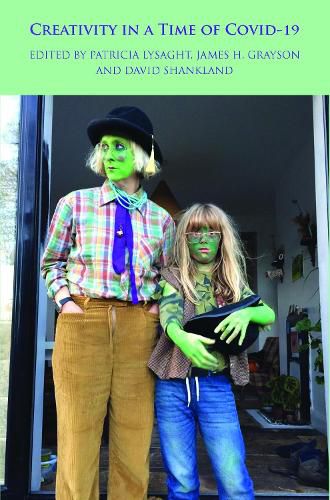Readings Newsletter
Become a Readings Member to make your shopping experience even easier.
Sign in or sign up for free!
You’re not far away from qualifying for FREE standard shipping within Australia
You’ve qualified for FREE standard shipping within Australia
The cart is loading…






This title is printed to order. This book may have been self-published. If so, we cannot guarantee the quality of the content. In the main most books will have gone through the editing process however some may not. We therefore suggest that you be aware of this before ordering this book. If in doubt check either the author or publisher’s details as we are unable to accept any returns unless they are faulty. Please contact us if you have any questions.
Creative responses to Covid 19 - no longer consumed by notions of divine retribution as in past plagues - constituted a broad cultural flowering, often within the digital world. This volume combines anthropology's understanding of ritual and society with folklore's appreciation of the marginal to explore the role of artistic practice in this period.
The chapters consider many different examples of artistic resourcefulness in this time of adversity. Lockdown constraints provided opportunities to re-invent traditions, as in the alternative 'non-fiestas' of the Basque Country, in which women took up roles previously denied to them. On the pilgrim route of St James, decorating shrines allowed people a sense of normality and continuity at a time when churches had closed their doors. The shutting of venues led one group of Japanese classical musicians to new online ways of working, and a global following. Making a church tour in Buenas Aires virtual amplified an old legend that resonated with the media, highlighting the scandal of femicide during the pandemic.
For individuals, online crafting might lend apt metaphors of mending, stabilizing and repair to daily lives; but, in the case of collage, absurdity and disjunction could also express uncomfortable new meanings. Forums of positive haiku blossomed; but satirical responses in the reworking of traditional Greek proverbs on Twitter, allowed participants to signal their distrust of politicians through creative uses of language. Anti-Vaxx and QAnon narratives, when viewed as folklore rather than disinformation foregrounding the fashioning of self and community within digital space. Children repurposed old games with 'Coronavirus tag', while locked-down artist-parents' creative engagement with the world beyond their front door led to a national campaign for the rights of children to play on the street.
Overall, there was a shift in artistic practice from inward activity to one undertaken in social solidarity. In many ways, this is the unifying theme of this startling period of recent history, as well as of this volume.
$9.00 standard shipping within Australia
FREE standard shipping within Australia for orders over $100.00
Express & International shipping calculated at checkout
This title is printed to order. This book may have been self-published. If so, we cannot guarantee the quality of the content. In the main most books will have gone through the editing process however some may not. We therefore suggest that you be aware of this before ordering this book. If in doubt check either the author or publisher’s details as we are unable to accept any returns unless they are faulty. Please contact us if you have any questions.
Creative responses to Covid 19 - no longer consumed by notions of divine retribution as in past plagues - constituted a broad cultural flowering, often within the digital world. This volume combines anthropology's understanding of ritual and society with folklore's appreciation of the marginal to explore the role of artistic practice in this period.
The chapters consider many different examples of artistic resourcefulness in this time of adversity. Lockdown constraints provided opportunities to re-invent traditions, as in the alternative 'non-fiestas' of the Basque Country, in which women took up roles previously denied to them. On the pilgrim route of St James, decorating shrines allowed people a sense of normality and continuity at a time when churches had closed their doors. The shutting of venues led one group of Japanese classical musicians to new online ways of working, and a global following. Making a church tour in Buenas Aires virtual amplified an old legend that resonated with the media, highlighting the scandal of femicide during the pandemic.
For individuals, online crafting might lend apt metaphors of mending, stabilizing and repair to daily lives; but, in the case of collage, absurdity and disjunction could also express uncomfortable new meanings. Forums of positive haiku blossomed; but satirical responses in the reworking of traditional Greek proverbs on Twitter, allowed participants to signal their distrust of politicians through creative uses of language. Anti-Vaxx and QAnon narratives, when viewed as folklore rather than disinformation foregrounding the fashioning of self and community within digital space. Children repurposed old games with 'Coronavirus tag', while locked-down artist-parents' creative engagement with the world beyond their front door led to a national campaign for the rights of children to play on the street.
Overall, there was a shift in artistic practice from inward activity to one undertaken in social solidarity. In many ways, this is the unifying theme of this startling period of recent history, as well as of this volume.